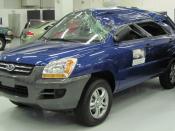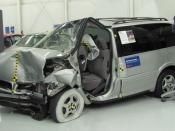Effectiveness of Bicycle Safety Equipment
Bicycles are used by all sorts of people, most commonly as transportation. A nice, relaxing bike ride on a crisp Sunday morning can quite easily turn into a panic ridden blood fest with ambulances and paramedics rushing around. This would be so if it weren't for bike safety equipment. Bicycle safety equipment comes in different shapes, sizes and types. The different sorts of equipment include: Gloves, elbow guards, body armour, lights, flags and tyre designs. Of course, the average person is more familiar with, and is more likely to use a helmet, reflector light and a specific tyre design. These three pieces of equipment are specifically designed so that during a nighttime bike ride, traffic and/or pedestrians are able to see the bike and avoid a collision with it. The tyres are specifically designed so that during wet periods or on slippery terrain (gravel, etc) the tyres are able to remain intact with the ground and keep the bike upright.
The tyres increase the friction with the ground.
The most popular and important piece of safety equipment is the helmet. According the Institute for Highway Safety, in the year 2000 90% of bicyclists who were killed, were not wearing helmets. This suggests that a lot of people do not know the implications of not wearing a helmet, and therefore do not bother wearing one. Also, in the United States, 1 in 8 cyclists with an injury to their body reported brain damage, and 67,000 out of 540,000 riders ended up in hospital with head injuries.
The use of elbow pads, body armour and specifically designed tyres are mainly to avoid a stack (tyres) or to prevent bruising or grazing in the incident of a collision (body armour, elbow pads). This equipment protects mainly the skin...


